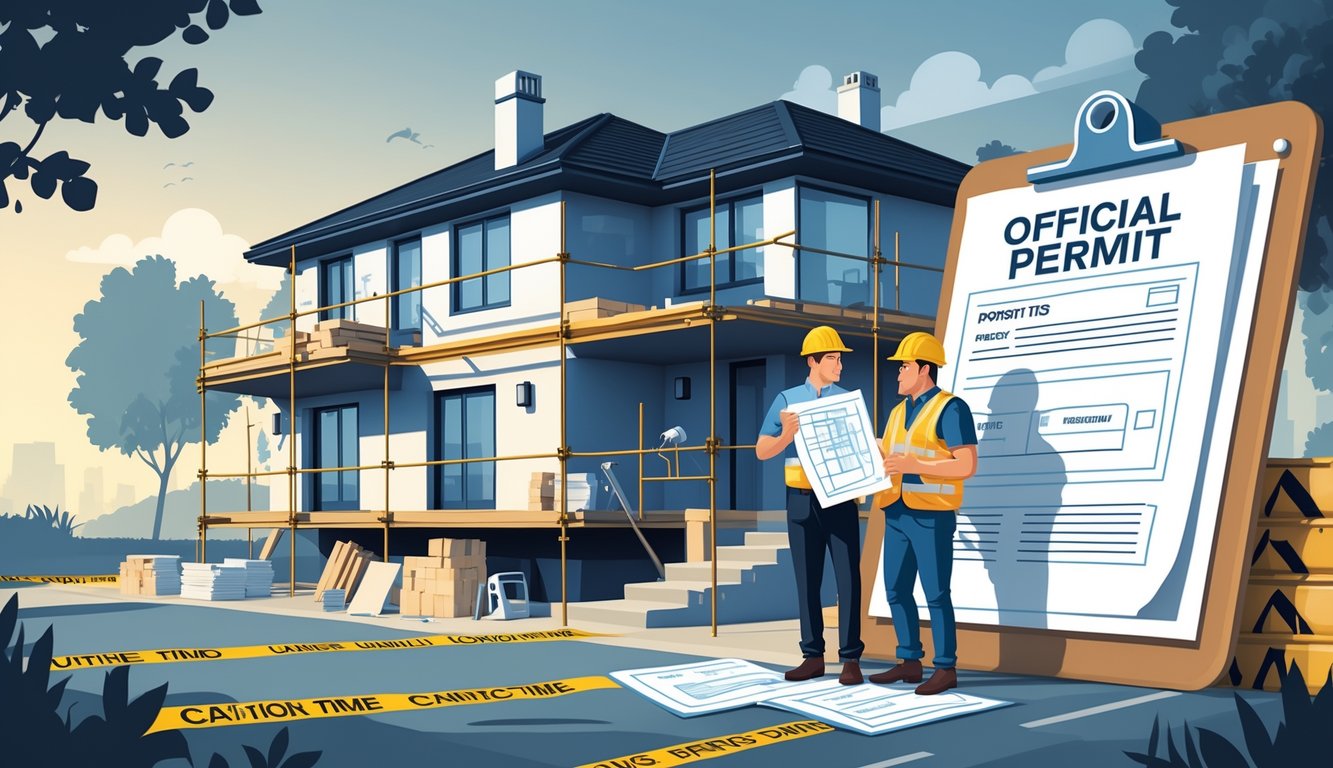
Documentation and Permit Application Best Practices
This paperwork circus? Nobody warns you how fast it gets out of hand. One missing signature, and your remodel’s in limbo. Everyone says, “Just have your docs ready,” but the devil’s in the details—property surveys, code requirements, all the weird stuff buried on the city’s website. It’s never just an application. It’s a minefield.
Preparing the Right Documentation
I hunt down every doc the permit office could dream up—plot plans, signed contracts, structural calcs, energy reports (Title 24? Still don’t get it), and then I double-check for signatures. The city wanted five copies of the floorplan—five, not four, not six—and they had to be stapled a specific way. I found out only because my first submission bounced for missing an engineer’s stamp, even though my contractor swore we didn’t need it.
Now I keep a checklist, which turned into a spreadsheet. I write down who I spoke to at the desk (“Linda K, Window #2, oatmeal for lunch”), just in case I need to drop a name. BuilderOnline said nearly 40% of delays come from missing details or unreadable plans. I believe it. Label everything. Scan to PDF. If you think the city wants colored renderings, just do it. Saves weeks.
Avoiding Common Pitfalls in Applications
Nobody tells you about the traps—sections you skip because they look repetitive, and then three weeks later, “application incomplete, please resubmit.” I once missed a field about roof fire ratings on a solar permit. Back to the end of the line. There’s always some local amendment buried in the codebook, or they update the process and forget to update the form online.
Permit pros say keep both paper and digital files, save every email, and don’t skip stuff you think won’t matter (“they won’t notice that missing setback diagram”—they will). Some cities want blue ink, or official parcel maps from their office. Inspections get scheduled before approvals, just to keep you guessing. The Swift Permits rep told me permit management platforms (ePermitHub, Cloudpermit, whatever) sometimes catch your errors before you hit send. Not a plug—just seems smart when your life’s on hold because you left a box blank.
Leveraging Technology for Faster Approvals
You’d think, with all these so-called tech upgrades, I’d finally get a straight answer about my permit, right? Nope. I get this notification, refresh the portal, and—bam—it’s pushed out another week. Seriously, why does every update just make things fuzzier? My neighbor’s kitchen is still a disaster zone. Digital tools, they said, would fix everything. Sure. I just want to know when stuff’s happening, and I’d rather never play phone tag again (which, by the way, used to be my entire Tuesday).
Real-Time Updates on Permit Status
I honestly believed once a city plugged in PermittingHub or Accela or OpenGov, my phone would just light up with texts every time something moved. Yeah, right. I’ve stared at that “processing” bar longer than I’ve sat through Zoom meetings that could’ve been emails. And supposedly, paper cities are even slower—like, 4 to 8 weeks slower according to the National Association of Home Builders. That’s long enough to forget you ever wanted a new kitchen.
Everyone acts like notifications mean I’m in the loop, but what’s the point if nobody updates the system? My contractor literally checks the dashboard while brushing his teeth, just hoping for a ping. Miss one email and your electrician’s at the wrong project. Sometimes, the tech glitches out and suddenly I’m two different applicants in the same system. It’s the “future,” but somehow I’m still waiting.
Digital Tools for Streamlining Communication
They say, “Hey, with CityGrows or ViewPoint Cloud, you’re not stuck in email hell.” Uh-huh. Sure, if the chat tool actually works. I can ping a reviewer or upload a file in under a minute—unless it’s Friday, because the interface always breaks on Fridays. (Why? Is there a Friday curse on municipal tech?) I had a permitting manager admit, “We just answer texts faster than voicemails.” Wow, what a revelation.
Big project? Fewer endless Zooms about who forgot the signature page. Unless, of course, the system assigns the wrong reviewer—then a week just vanishes. I’ve seen the audit logs; it’s real. Sometimes, the dashboard even shows who’s out of the office, which feels miraculous. But then I’ll see some private chat about “is this window egress or not?”—not my circus, but apparently now it’s my monkeys.
Proactive Planning and Permit Expediting Options
Schedules? Yeah, good luck. My neighbor’s kitchen sat half-demolished for three weeks because she missed one document in her packet. I mean, who hasn’t scrambled to reschedule workers because the city inspector went on vacation and nobody bothered to tell you? Permits run on their own weird time, but apparently, there are ways to nudge things along.
Benefits of Proactive Planning
Is proactive planning glamorous? No. Does it save your sanity? Yeah. Getting your architect, contractor, and permit consultant together before demo—before you even think about buying tile—actually shaves off dead time. Especially for anything with structural reviews. (California earthquake rules? Don’t get me started. I had to send the same plans to three different reviewers. For what? Who knows.)
I tried winging it on a bathroom remodel. Thought I could skip the details. Nope. City flagged my electrical upgrade because I didn’t include a circuit map. Turns out, being annoyingly specific with paperwork actually matters. Good builders swear by pre-submittal checklists. Some cities post them, most don’t bother updating. I skimmed a bunch of case studies (Modernize, 2024), and honestly, every delay started with someone assuming it’d work itself out.
After screwing up, I started emailing city staff to confirm every single requirement. Every delay I’ve had? Someone guessed and was wrong. Proactive planning isn’t extra work. It’s just moving the pain to the beginning. Feels wrong, but it works. If you want a checklist, half the architects on Houzz have them. Download one, fill it out, and stop pretending you’ll remember everything.